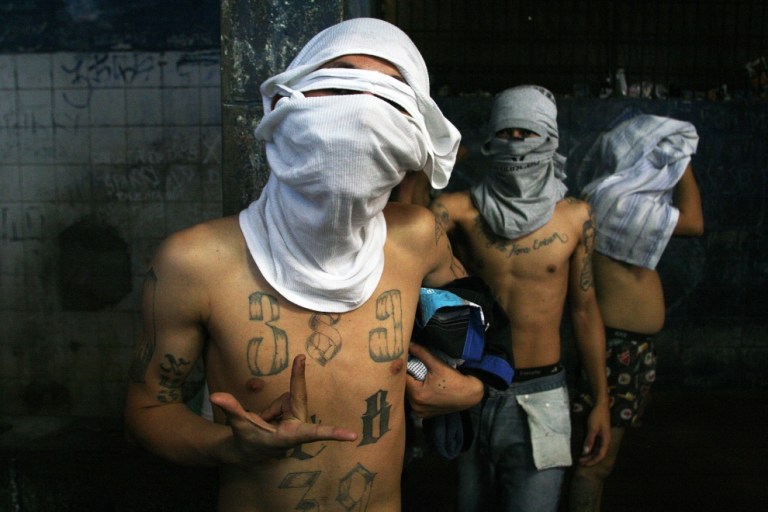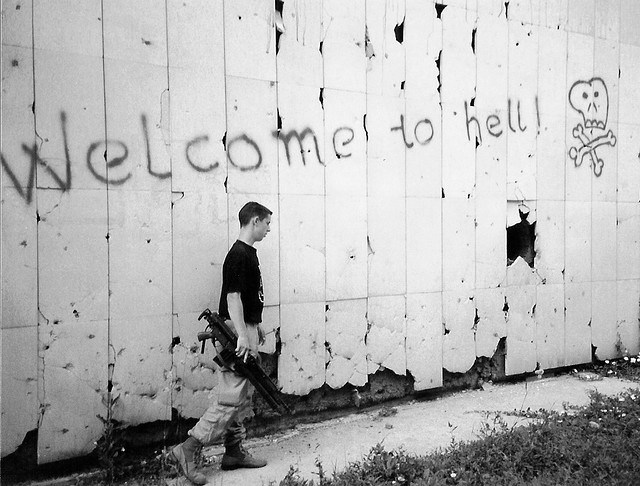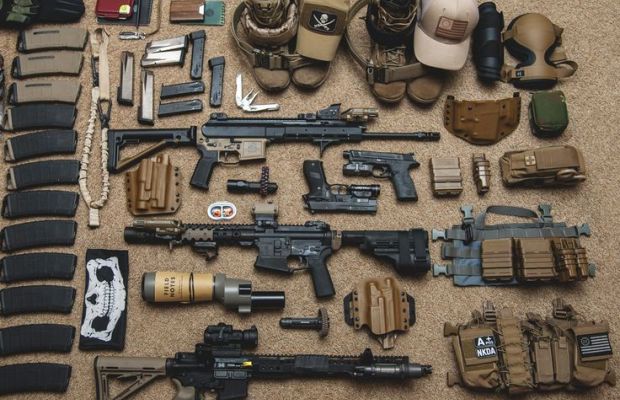I am asked regularly what equipment people should have or need for tactical or hostile situations. I am not a gear-queer and tell people to make maximum use of what they have in their everyday environment, there is no need for camouflage knife, forks, and spoons. I am a great believer in the saying that “The more you know, the less you need” and I tell my students always look for equipment that is multi-use or think how something can be adapted for multiple uses.
Let me ask you a question… What makes equipment tactical? For me all that makes equipment tactical is the word “Tactical” which, is overly used these days by stores and manufactures to sell Chinese made junk. Apart from firearms and ammunition a lot of useful equipment can be found in most hardware or kitchen stores. The advantage of kit from hardware or kitchen stores is that it’s meant to be used and worked with, not just talked about, and played with as is the case with a lot of tacticool kit. For example, I always buy my flashlights from hardware stores, they are generally a lot cheaper than tacticool flashlights and take AA batteries etc. that are more widely available than fancy lithium batteries. From a tactical perspective, you don’t need powerful flashlights, they need to be powerful enough for the job, you want to see, not be seen!
Camouflage and tactical black kit may look cool when you showing it off to your buddies but, try finding the camo flashlight or zippo you dropped in the bush when you need it… As, long as kit does not shine or reflect light it will be fine. When buying, equipment think about if you drop it, which you will, would it be easy to find! In potentially hostile environments all but essential equipment needs to be packed or in your pouches or pockets, so your orange spork should not be tucked in your hat band!
The below personal tactical gear list is taken from a proposal I put together for counterinsurgency / tactical team in West Africa a few years ago, this should give you a few hints on kit etc. I have made some explanations on why I have included some of the items, and not every item will be applicable to everyone in every situation, so use this as a guide and adapt it. This is a tactical gear list for operational personnel and I am sure some reading this will say it’s not applicable for most preppers etc. OK, then don’t read it, but remember not so long ago Libya, Syria and The Donbass (Eastern Ukraine) were peaceable countries, whose populations would not have believed you if you told them civil wars would tear them apart.
From a U.S perspective look at what happened in New Orleans with hurricane Katrina in 2005 or the situation in South Chicago. Not so far afield look at what’s happening in Mexico, could this happen in the U.S., to an extent yes… The Mexican Cartels in the U.S. generally keep things amongst their own communities, they are making plenty of money and compared to Mexico they are relatively safe. But with the strengthening of security on the U.S./Mexican border, which will lead to human and drug trafficking routes being cut, things could spill over. What trafficking routes are left will be fought over and the now unemployed narcos will be seeking other sources of income.
Such situations can lead to what can be classed as “Bosnification”. Now when society breaks down, who takes charge? Sadly, in most places its usually the organized criminals; they are organized, armed and willing to take risks. After the Soviet Union collapsed Mafia groups took control in one way or another of local governments throughout the former USSR. Many of the irregular units fighting in the civil wars in the Balkans in the 1990’s were formed by what could be classed as Mafia bosses. You can see it these days in Iraq, Libya and Syria where local militias have taken control of areas and change sides on a regular basis, and in the meantime the local populations have to deal with their BS and taxes.
In Mexico, in theory, there is the Military, Federal Police, State, and Municipal Police to enforce the laws but much of the country is controlled by drug Cartels and their offshoots. I have worked in Mexico and the police there have an extremely difficult job. I have trained some very effective police tactical units in Mexico who in the long run were disbanded or became ineffective due to being targeted by criminals. State and local police generally live in the areas they work in, if not from and grown up in those areas, which makes it easy for the Cartels to identify them and their families. Even if the officers want to do their jobs properly are they going to put their families lives at risk to do so, or just take their pay check and look the other way? In many situations where regular law and order has broken down, be it in Mexico or elsewhere it has been up to the local communities to protect themselves.

Now, when considering what equipment you need, put it into four different layers and think what gear you need, rather than what you want. I have used British Army Infantry terminology to help explain this section, each layer would be added on as required.
- Personal Items: Think about what should be on your person and at hand at all the time; knife, pistol, pistol magazines, cell phone/radio, lighter, personal water filter, basic first aid kit.
- Assault Order: This would consist of the essential kit needed to conduct a short-term military type tasking in a potentially hostile environment; rifle, spare magazines, water bottles, comprehensive first aid kit, protective clothing etc.
- Combat Order: This is the Assault Order with rations and personal equipment, that enable the you to live and fight for a period of 24 hours.
- Marching Order: This is the Combat Order with the addition of a field equipment such as backpack, sleeping bag, poncho, cooking stove, spare socks etc. required for two week operations without resupply, except for ammunition, rations, and water.

Near Sniper’s Alley, Sarajevo, Bosnia Herzegovina.
As I stated earlier this kit list was put together for a government team who had access to military weapons, I know in most places civilians will not be able to get AK’s and CS grenades, so make use of what you have. If all I had access to was a double barred shotgun I would be happy, it’s a very effective weapon if you know how to use it and have your strategies planned! If you have access to firearms buy weapons that you can get spare parts and magazines for, in common calibers. I have heard people applauding the FN 5.7 as the best pistol on the market, and I will admit it’s a very nice weapon, but trying to get the ammo at the best of times can be a pain, during a SHTF situation, it might be easier to find rocking horse shit… I would suggest you stick to 9mm, .40 or .45 etc…
Team Formation & Equipment
Team operatives need to be carefully selected not only for physical abilities but also for social skills and their ability to blend in with other people. This means the best operatives are usually average height and weight and look like normal people. The operatives need to be physically fit and should be trained in light infantry tactics, first aid, communications etc. The operatives will need a high standard of self-discipline and intelligence; they will need to be mentally flexible enough to adapt to rapidly changing situations. The operators will need to be able to work by themselves or in team with minimal equipment and support. Our suggested size for an operational team is six operatives, this size team should be able to handle most tasks and be able to be split into two three-man independent fire teams. The team should consist of a team leader, a second in command and four operatives.
Equipment
The operatives need to be able to operate with minimal equipment and be able to adapt everyday objects to meet their needs. The operatives should be as lightly equipped as possible, too much gear will only slow them down. When on operations they should only carry what is necessary, if they don’t need it, don’t carry it. Below is a list of equipment the operative should have access to for cover and overt operations, they will not need everything for every operation.
Personal Equipment
- Communications; Radios, cell/mobile phones. Note: Consider if the cell phone networks will be working in SHTF situations. Remember with radios, the more powerful they are the easier they are to intercept from a distance. Make maximum use of smart phone apps if they do not compromise operational security. All communications equipment needs to be secured at all times.
- Power; mobile power sources need to be available for charging communication devices etc. Consider solar options.
- A reliable wrist watch
- Two good quality high capacity pistols with minimum of 6 magazines: We recommend two identical full size service weapons.
- Concealable/duty pistol holsters; strong side and shoulder rigs.
- One folding stock rifle/carbine with minimum 6 magazines. We recommend AK-47 type platforms. Note: AK platform was chosen for this location due to availability, always chose weapons you can get spare parts and ammunition for.
- Chest rig capable of holding 6 rifle magazines and two water bottles
- Plenty of ammunition for operations and training.
- Weapon cleaning kit
- Waterproof flashlight and batteries
- Personal first aid equipment
- Quality fixed blade knife
- Quality multi-pliers
- Quality pruning shears/secateurs. Note: used for building hides and clearing trails of brush that can make noise etc.
- Quality compass, Maps of operational areas, GPS with software updates.
- Minimum two 1 liter water bottles, water purification tablets or personal filters.
- A level 3A concealable bullet proof vest. Note: protective clothing should not inhibit movement and remember the heat factor!
- Smoke/CS grenades. Note: In previous articles I have mentioned from a civilian perspective smoke dischargers are used for maritime distress signals and available at most boat supply stores. Also, paintball/airsoft players use smoke in milsim games, they seem to have a wide selection available online etc.
- Two Carabiners & 20 meters of 9.2 mm climbing rope
- Scrim net/sniper veil
- Backpack
- poncho
- sleeping bag
- stove etc.

Team equipment
- Spotting scopes
- Night vision
- Stills and videos cameras
- Bolt cutters/entry tools
Dress
Operatives should dress to blend in with their environments; civilian clothes should be used for tactical operations especially when working in close proximity of civilians. A simple green or brown shirt can blend in to bush just as well as camouflage if the operative is properly trained. Our preference for civilian cloths over military fatigues is because if you are performing an operation in a suburban/urban area you have to blend in with the public and if you are wondering around the streets in military fatigues and face paint you will draw attention.
For footwear, we suggest to wear what the general population is wearing, something light that is good for running and swimming in. Tactical boots can draw attention and their aggressive tread leave obvious ground sign. If using running shoes ensure any reflective material is removed.
The only specialist clothing we would recommend would be a fire proof balaclava and gloves. The balaclava can be used for concealing your identity and hiding the shine from your face on rural operations. Good gloves amongst other things gives you extra grip on your weapon and again hides the shine from your hands on rural operations etc. Tactical clothes for direct action operations should be fire proof and of a good quality.
Cash
Cash and assets will need to be available for operational expenses and to pay sources for information or services provided. Operatives should sign for all cash and assets and get receipts or at least record all expenses.
Safe Houses
Teams and operatives will need places to work from, live and train. Locations will need to be secure and defend-able. A threat assessment needs to be compiled on all locations uses by the team; weak spots must be identified and dealt with. Escape routes need to be identified from the safe houses to other safe locations or ERV’s. All potential surveillance and sniper locations around the safe house need to be identified and monitored. Doors and windows on all floors need to be secured, reinforced or blocked if they are not used. The safe houses should regularly be searched for listening devices, cameras or IED’s. When entering a safe house that has been left unoccupied even for a short period of time the whole place needs to be search for intruders, signs of intruders or forced entry. If a safe house is broken into it should not be used again. Fire alarms and firefighting equipment needs to be available and in working order. Above all the safe house does not want to draw attention; it needs to appear to be a normal house. It is difficult if not impossible to find the perfect safe house, find the best you can and take all precautions.
Transportation
All vehicles used by the operatives needs to blend in with the environment they will be working in and not draw attention. When working in vehicles you should where manpower allows always have two operatives in a vehicle. One would be the driver, who should always stay in the vehicle, behind the wheel ready to drive away in an emergency and the other would act as escort or navigator. Windows where possible should be tinted for surveillance purposes. The vehicles should be registered to front companies and not to the operatives or the agency they are working for, so they cannot be traced back to you by the terrorists. Vehicles should be reliable and regularly serviced, all should have a good break down kit. You will also need a recovery plan for immobilized vehicles and stranded personnel. When a vehicle is left unattended the area around it needs to be searched and then the vehicle needs to be searched for IED’s, tracking devices or contraband.
In urban areas, public transport should be used as it is good for identifying terrorist surveillance, losing anyone who has you under surveillance and is not usually an expected mode of transport for an operative.
Conclusion
Hopefully this article has given you a few things to think about. The main thing I try to stress to people about equipment is keep it simple and keep it to what you need… Remember, the more you know, the less you need!





